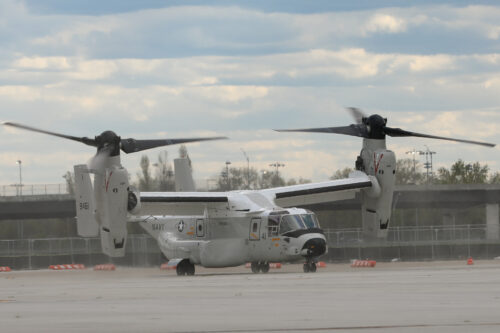The Mayor of Iwakuni, Yoshihiko Fukuda, has agreed to the U.S. Navy’s deployment of CMV-22 Osprey aircraft at Marine Corps Air Station Iwakuni, marking the first stationing of this tilt-rotor variant in his city. The decision aligns with a broader realignment of U.S. military assets in the region, which includes the rotation of aircraft carriers and the introduction of F-35C stealth fighter jets. This deployment will add to the existing Osprey presence in Japan, complementing the Marine Corps’ MV-22s at Futenma air base in Okinawa and the Air Force’s CV-22s operating from Yokota base near Tokyo.

Mayor Fukuda’s acceptance comes amid lingering safety concerns surrounding the Osprey platform, which has been involved in several incidents both in Japan and abroad. The mayor cited assurances from Japanese and U.S. officials regarding the aircraft’s safety as a key factor in his decision. He also noted that the overall number of aircraft at the base is expected to decrease by approximately 10 following the deployment, potentially mitigating environmental impacts such as noise levels.
The announcement has garnered attention from national leadership, with Defense Minister Minoru Kihara expressing gratitude for the mayor’s acceptance of the deployment plan. This response underscores the strategic importance of the move within the framework of U.S.-Japan defense cooperation.
However, the decision follows a recent tragic incident involving an Air Force CV-22, which crashed near Yakushima Island in November, resulting in eight fatalities. The U.S. Air Force investigation concluded that the crash was caused by a gearbox failure compounded by problematic decision-making in response to the malfunction. This incident has reignited debates about the Osprey’s reliability and operational procedures.
Despite these concerns, both U.S. and Japanese authorities maintain that the Osprey platform does not suffer from inherent structural defects. A temporary worldwide grounding of Ospreys in December was lifted in March, although this decision preceded the release of the full Yakushima crash investigation details.
As the U.S. military moves forward with stationing CMV-22s at Iwakuni, the deployment highlights the complex balance between strategic military objectives, local community concerns, and ongoing discussions about the safety and reliability of advanced military aircraft operations in Japan.
For more information, hit the Source below